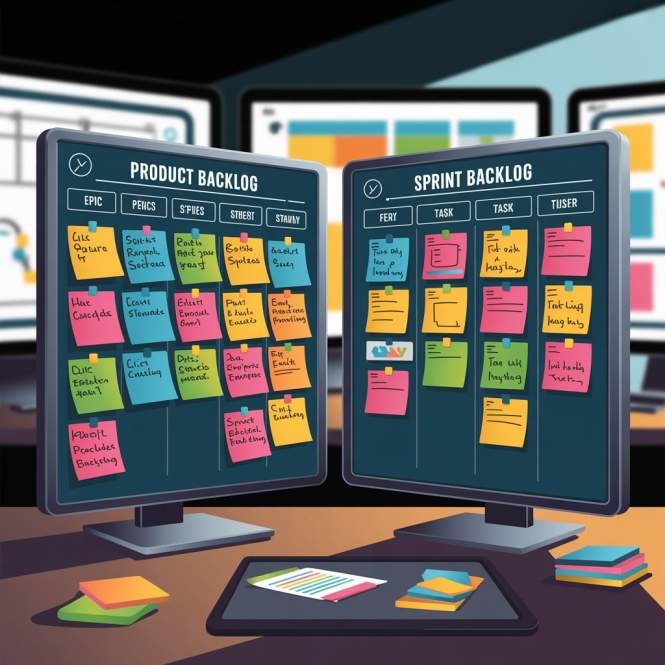

Get best deals on top courses

🎯 Introduction
Scrum Master interviews aren’t just about mindset they also test your ability to measure, analyze, and support team performance.
Interviewers often ask:
“What metrics do you track as a Scrum Master?”
“How do you use data to improve team delivery?”
“Which metrics do you share with stakeholders?”
In this blog, you’ll learn the top Scrum metrics, how to explain them with context, and what to avoid saying in an interview.
👉 Want to practice explaining metrics and scenario-based questions? Join ourScrum Master Interview Preparation Bootcamp.
📊 Top 8 Scrum Master Metrics (and How to Talk About Them)
✅ 1. Velocity
What It Is:
The average amount of story points completed per sprint.
How to Explain:
“I use velocity to understand how much work the team can realistically commit to in future sprints. It helps with forecasting and planning, not performance evaluation.”
🚫 Avoid Saying: “We use velocity to track developer productivity.” (❌ Red flag)
✅ 2. Sprint Burndown Chart
What It Is:
A chart that shows remaining work over the sprint timeline.
How to Explain:
“I review burndown charts daily with the team to identify early signs of blockers or overcommitment. If the line flatlines, it triggers a conversation not blame.”
✅ 3. Epic or Release Burndown
What It Is:
Tracks progress toward a larger milestone or release goal.
How to Explain:
“I use release burndown charts to communicate realistic timelines to stakeholders. This gives visibility while protecting the team from deadline pressure.”
✅ 4. Cycle Time
What It Is:
The time it takes for a task to move from 'In Progress' to 'Done'.
How to Explain:
“Cycle time helps identify bottlenecks in our delivery process. If stories are getting stuck in QA or code review, we can facilitate improvements.”
✅ 5. Lead Time
What It Is:
Time from ticket creation to completion (includes waiting + execution).
How to Explain:
“Lead time helps me gauge how long it takes for an idea to become value delivered. I use it to assess backlog health and prioritization flow.”
✅ 6. Escaped Defects
What It Is:
Bugs that reach production after testing is done.
How to Explain:
“I track escaped defects to see if we need better DoD criteria or testing practices. It’s not about blame - it’s about strengthening quality.”
✅ 7. Team Happiness or Engagement
What It Is:
Qualitative metric from retrospectives or anonymous surveys.
How to Explain:
“We periodically use anonymous check-ins like ROTI or Team Radar. Tracking engagement helps me support morale and psychological safety.”
✅ 8. Work in Progress (WIP)
What It Is:
The number of tasks actively being worked on at any time.
How to Explain:
“I coach the team on limiting WIP to reduce context switching and improve flow. Too much WIP usually signals unclear priorities.”
🔎 How to Talk About Metrics in Interviews
✅ Use examples:
“We noticed increasing cycle time, so I facilitated a retro focused on QA handoff delays. That led to pairing and better backlog refinement.”
✅ Link metrics to outcomes:
“Improving our DoD reduced escaped defects by 40% over 3 sprints.”
✅ Show balance:
“I use metrics to uncover opportunities, not micromanage the team.”
❌ Metrics Pitfalls to Avoid in Interviews
Using metrics to justify pressure or micro-tracking
Over-relying on a single metric
Ignoring the people side metrics are tools, not goals
Not knowing when not to use a metric
🧠 Bonus: Which Metrics to Share with Stakeholders?
📢 Share:
Release burndown
Lead time trends
Cumulative flow diagrams
🤐 Avoid:
Velocity comparisons across teams
Individual-level stats
💬 Explain why:
“I focus on team-level metrics to ensure healthy delivery not to compare or penalize.”
🚀 Final Tip: Prepare Real Metrics Stories
In interviews, don’t just name metrics - tell how you used them to help the team.
🔥 Practice these responses in real interview simulations inside our
👉Scrum Master Interview Preparation Bootcamp
Want to Level Up Your Skills?
Trending Blogs
EXPLORE BY CATEGORY
End Of List








